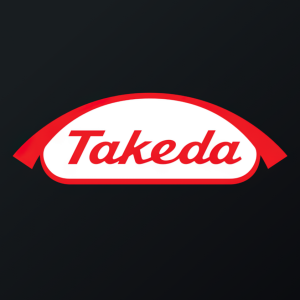U.S. Food and Drug Administration Accepts Takeda’s Supplemental Biologics License Application for Use of TAKHZYRO® (lanadelumab-flyo) to Prevent Hereditary Angioedema (HAE) Attacks in Children 2 Years of Age and Older
− If Approved, TAKHZYRO Would Be the First and Only Prophylaxis Treatment Available for HAE Patients Younger Than 6 Years of Age 1-3
− Filing is Based on Data from Phase 3 SPRING Study in Pediatric Patients 2 to <12 Years of Age
− HAE is a Rare, Debilitating and Potentially Life-Threatening Condition that Causes Unpredictable and Serious Attacks that May Occur Very Early in Childhood 4,5
"Unpredictable, debilitating and potentially life-threatening HAE swelling attacks can cause a physical and emotional toll on those living with this rare disorder; this is burdensome for young children and their caregivers,” said
The sBLA is based on data from the SPRING study, the first and only open-label Phase 3 trial for HAE patients under the age of 12. If approved, children in the
Currently, TAKHZYRO is approved and available in more than 30 countries around the world and is supported by a robust clinical development program, which includes one of the largest prevention studies in HAE with the longest active treatment duration.
About TAKHZYRO® (lanadelumab-flyo) Injection
TAKHZYRO is a prescription medicine used to prevent attacks of hereditary angioedema (
TAKHZYRO Safety Information for
TAKHZYRO may cause serious side effects, including allergic reactions. Call your healthcare provider or get emergency help right away if you have any of the following symptoms:
- wheezing
- difficulty breathing
- chest tightness
- fast heartbeat
- faintness
- rash
- hives
The most common side effects seen with TAKHZYRO were injection site reactions (pain, redness, and bruising), upper respiratory infection, and headache.
These are not all the possible side effects of TAKHZYRO. For more information, ask your healthcare provider or pharmacist. You may report side effects to the FDA at 1-800-FDA-1088.
TAKHZYRO has not been studied in pregnant or breastfeeding women. Talk to your healthcare provider about the risk of taking TAKHZYRO if you are pregnant, plan to be pregnant, are breastfeeding, or plan to breastfeed.
Please see full Prescribing Information, including information for patients.
About Hereditary Angioedema
Hereditary Angioedema (HAE) is a rare genetic disorder that results in recurring attacks of edema – swelling – in various parts of the body, including the abdomen, face, feet, genitals, hands and throat. The swelling can be debilitating and painful.4,6 Attacks that obstruct the airways can cause asphyxiation and are potentially life-threatening.6 HAE affects an estimated 1 in 50,000 people worldwide.4 It is often under-recognized, under-diagnosed and under-treated.8
About Takeda
Takeda is a global, values-based, R&D-driven biopharmaceutical leader headquartered in
Important Notice
For the purposes of this notice, “press release” means this document, any oral presentation, any question and answer session and any written or oral material discussed or distributed by
The companies in which Takeda directly and indirectly owns investments are separate entities. In this press release, “Takeda” is sometimes used for convenience where references are made to Takeda and its subsidiaries in general. Likewise, the words “we”, “us” and “our” are also used to refer to subsidiaries in general or to those who work for them. These expressions are also used where no useful purpose is served by identifying the particular company or companies.
Forward-Looking Statements
This press release and any materials distributed in connection with this press release may contain forward-looking statements, beliefs or opinions regarding Takeda’s future business, future position and results of operations, including estimates, forecasts, targets and plans for Takeda. Without limitation, forward-looking statements often include words such as “targets”, “plans”, “believes”, “hopes”, “continues”, “expects”, “aims”, “intends”, “ensures”, “will”, “may”, “should”, “would”, “could” “anticipates”, “estimates”, “projects” or similar expressions or the negative thereof. These forward-looking statements are based on assumptions about many important factors, including the following, which could cause actual results to differ materially from those expressed or implied by the forward-looking statements: the economic circumstances surrounding Takeda’s global business, including general economic conditions in
Medical information
This press release contains information about products that may not be available in all countries, or may be available under different trademarks, for different indications, in different dosages, or in different strengths. Nothing contained herein should be considered a solicitation, promotion or advertisement for any prescription drugs including the ones under development.
References
- HAEGARDA® (C1 Esterase Inhibitor Subcutaneous [Human]). Product Characteristics.
- CINRYZE® (C1 esterase inhibitor [human]). Prescribing Information.
- Farkas H, Martinez-Saguer I, Bork K, et al. International consensus on the diagnosis and management of pediatric patients with hereditary angioedema with C1 inhibitor deficiency. Allergy. 2017;72(2):300-313. doi:10.1111/all.13001.
-
Busse PJ, Christiansen SC, Riedl MA, et al.
US HAEA Medical Advisory Board 2020 Guidelines for the Management of Hereditary Angioedema. J Allergy Clin Immunol Pract. 2021 Jan;9(1):132-150.e3. - Bork K, Hardt J, Schicketanz KH, Ressel N. Clinical studies of sudden upper airway obstruction in patients with hereditary angioedema due to C1 esterase inhibitor deficiency. Arch Intern Med. 2003;163(10):1229–35. doi: 10.1001/archinte.163.10.1229.
- Banerji A. Hereditary angioedema: Classification, pathogenesis, and diagnosis. Allergy Asthma Proc. 2011;32:403–407.
- TAKHZYRO® (lanadelumab-flyo) injection. Prescribing Information.
-
Longhurst HJ,
Bork K. Hereditary angioedema: an update on causes, manifestations, and treatment. Br J Hosp Med. 2019;80(7):391-398.
View source version on businesswire.com: https://www.businesswire.com/news/home/20221004006135/en/
Media Contacts:
erin-marie.beals@takeda.com
+1 781-336-9417
Ex-
JC Molina
juan.molina@takeda.com
Source:








